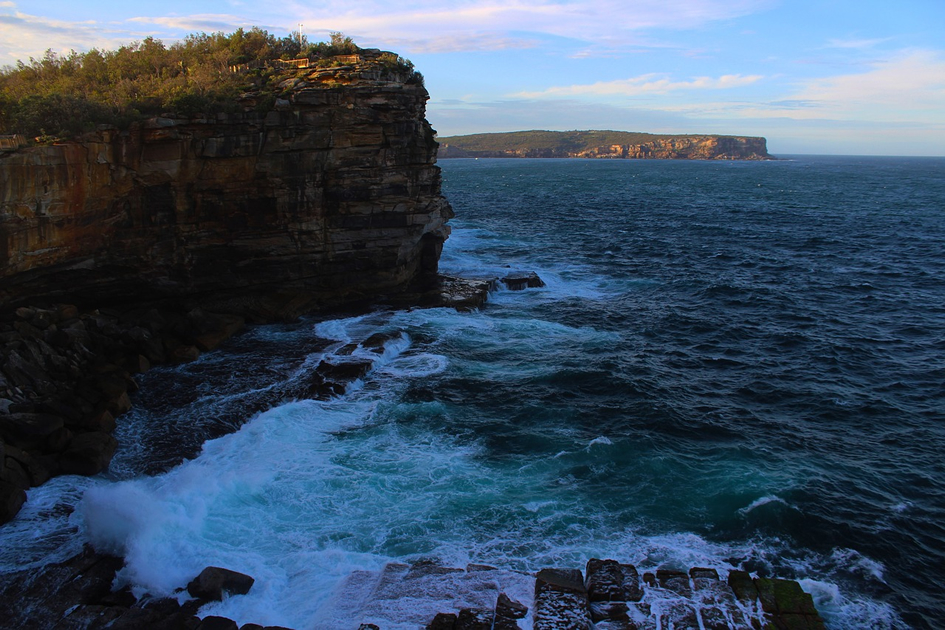Watsons Bay
Beaches
The closest spot for a swim is at Camp Cove, a short walk from Watsons Bay ferry terminal. It’s a small, sheltered beach, perfect for families. At the eastern end, there’s a short jetty where you might find locals snorkeling, public toilets, and a kiosk to buy refreshments.
Further around the harbor is Lady Bay Beach, a more secluded, clothing-optional harbourside beach. It was the first nudist beach in Sydney to be given a nod from officials in the 1970s (nudity is permitted on the beach only).
Restaurants
Next to the Beach Club, Doyles on the Beach is another Watsons Bay institution that opened here on the beachfront in 1885. It also has a shopfront for takeaway on Fishermans Wharf. Slightly more upmarket again is Dunbar House, an 1830s restored Marine Parade mansion serving breakfast, lunch, and high tea.
Watsons Bay Hotel
The Watsons Bay Boutique Hotel is blessed with one of those iconic locations that you can’t miss. The ferry pulls up practically outside, sailing boats bob in the harbor, with views to Sydney city beyond. While you’re here, tradition demands that you sit in the Beach Club beer garden at sunset and watch the sun dissolve behind the Harbour Bridge, jutting above Bradley’s Head.
Ferry
To take the ferry to Watsons Bay, you can go directly from Circular Quay or as a stop on the way to and from Manly. The ferry leaves around every 30 minutes and takes about 25 mins.
Leave the car behind if visiting Watsons Bay; the parking options can only cope on weekends.
Watsons Bay: A Brief History
Watsons Bay is a suburb of Sydney, Australia, located on the city’s eastern side. It is known for its beautiful beaches, stunning views of the Sydney Opera House and Harbour Bridge, and its rich history.
The Cadigal people, an Aboriginal Australian tribe, first inhabited the area around Watsons Bay. The first European to visit the site was Captain Arthur Phillip, the commander of the First Fleet, who landed at Camp Cove on January 21, 1788.
In the colony’s early years, Watsons Bay was used as a base for the Royal Navy. A lookout was built on the cliffs in 1790, and a signal station was established in 1838. The area also became a popular spot for fishing and whaling.
In the mid-19th century, Watsons Bay became a tourist destination. A ferry service was established in 1870, and several hotels and restaurants were built. The area also became a popular spot for swimming and yachting.
Watsons Bay is a thriving suburb with a mix of residential, commercial, and tourism businesses. It has several historical landmarks, including the Gap Lookout, Hornby Lighthouse, and the Watsons Bay Hotel.
Some of the notable events in the history of Watsons Bay include:
- 1788: Captain Arthur Phillip lands at Camp Cove.
- 1790: A lookout is built on the cliffs of Watsons Bay.
- 1838: A signal station is established at Watsons Bay.
- 1850s: The land around Camp Cove is subdivided into domestic plots.
- 1870: A ferry service is established between Watsons Bay and Circular Quay.
- 1880: The population of Watsons Bay reaches 64 households.
- 1910: The Gap Hotel is built.
- 1945: HMAS Watson, a naval training base, is established at South Head.
- 1980: The Watsons Bay Heritage Conservation Area is declared.
Watsons Bay is a beautiful and historic suburb with a lot to offer visitors. Whether you’re interested in its Aboriginal history, its role in the early days of the colony, or its more recent development as a tourist destination, Watsons Bay is a place worth exploring.

